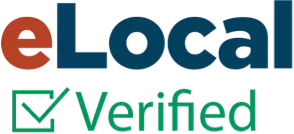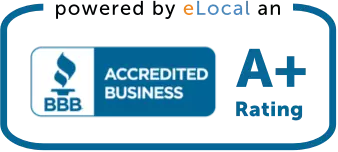
When it comes to furnace repair, the answer isn’t as simple as tossing out a price tag. All in all the cost
can vary widely depending on the problem, type of furnace, age, and even the time of day you
call for help. To help you get a clear idea, let’s break down everything you need to know about
furnace repair costs, from the small fixes to the budget-busting overhauls.
Average Furnace Repair Costs by Type
The average furnace repair cost depends significantly on the furnace type and the part that
needs to be fixed. For instance, heat exchangers, fan motors, and printed circuit boards are
pretty expensive while other parts like transformers, flame sensors, or ignition modules are
much less pricey. Generally:
● Electric Furnaces: Repairs can range from $50 to $300, often on the lower end
because electric furnaces typically have fewer components that require repair.
● Gas, Oil, or Propane Furnaces: Repairs can be steeper, typically falling between $300
and $1,200. These furnaces are more complex and often involve higher parts and labor
costs.
Is It Worth Repairing an Old Furnace?
If your furnace is pushing 20 years, repairs may be more costly and less effective. One major
concern for older models is the heat exchanger. This critical part is prone to rust and corrosion
over time. As such, you must ensure it stays intact and not rusted or acid-eaten, which could
lead to dangerous carbon monoxide leaks. Once a heat exchanger starts failing, it’s generally
better to invest in a new furnace rather than sinking money into an aging unit. After all, replacing
the entire furnace could save you in the long run, both financially and in terms of safety.
Common Furnace Repairs and Their Costs
Here’s a quick look at some of the most common furnace repairs and what they might cost:
- Filter Replacement: $50 to $200
Filters are the first line of defense for your furnace, keeping dust and debris out of the system.
Dirty filters can impact efficiency, and replacing them is one of the simplest and least expensive
maintenance tasks. - Thermostat Issues: $50 to $200
A malfunctioning thermostat might prevent your furnace from producing heat or running at the
correct temperature. Sometimes, all you need is a battery change, but if it’s more serious, a
replacement thermostat might be in order.
- Pilot Light or Ignition Issues: $100 to $300
If your pilot light goes out, or if your ignition system fails, your furnace won’t produce heat. This
issue can sometimes be resolved quickly, but in more serious cases, parts may need
replacement. - Blower Belt or Motor: $150 to $1,500
A worn or damaged blower belt can cause a loud squealing noise. Replacing or tightening it is a
quick fix, but if the motor itself is damaged, you’re looking at a much pricier repair. - Gas Leaks: Varies (Contact a Professional)
A gas leak is a serious issue and should be handled immediately by a professional. The cost of
addressing a leak can vary depending on its source. - Condensate Drain Line Blockage: $100 to $300
Furnaces produce condensation, which is drained away through a condensate line. If this line
becomes clogged, water can leak from the furnace.
Factors Affecting Furnace Repair Costs
Several factors can impact the overall cost of furnace repair:
● Age of the Furnace: Older furnaces are often harder and more expensive to repair.
Moreover, their parts are more likely to be harder to source.
● Severity of the Issue: Major issues like repairing a faulty ignitor, fixing a ducting issue,
or finding motor or heat exchanger replacements will naturally be more expensive.
● Labor Costs: The cost of skilled HVAC labor varies based on location, availability, and
emergency after-hours calls.
● Parts Availability: Some parts are more expensive due to limited availability. This is
especially the case when repairing older or unique furnace models.
● Time of Service: After-hours or emergency repairs will usually cost more, especially if
your technician needs to open the supply house after hours.
The highest Furnace Repair costs:
Certain parts of the furnace are more expensive to replace than others. Here’s a rundown of the
priciest repairs and what you might expect:
● Blower Motor Replacement: $500 to $1,500 The blower motor is a major component of your furnace, responsible for pushing warm air
throughout your home. The price varies based on the motor’s horsepower and efficiency.
● Circuit Board Replacement: $300 to $600
The circuit board controls many of the furnace’s functions, and replacing it can be an
intermediate to major repair, depending on the model and labor needed.
● Heat Exchanger Replacement: $400 to $1,000
Replacing a heat exchanger can be both costly and time intensive. This part is responsible for
transferring heat from the combustion chamber to the air, and its failure is a sign that the
furnace is nearing the end of its lifespan.
Not high cost of Furnace Repairs
Not every furnace repair will break the bank! Some of the more affordable fixes include:
Filter Replacement: Usually costs between $50 to $100 depending on the filter size and type. Regular replacement helps ensure optimal airflow and efficiency.
Thermostat Adjustment or Replacement: Based on the type of thermostat, it can cost up to $200. A properly functioning thermostat ensures your HVAC system operates efficiently and keeps your home comfortable.
Flame Sensor Cleaning: The labor fee for such a job is between $100 and $200. A clean flame sensor prevents furnace shutdowns and ensures safe and efficient operation.
Preventive Measures to Avoid Repair Cost highs
A little preventive maintenance goes a long way. Here are some measures you can take to keep
your furnace running smoothly:
- Regular Filter Changes: Change filters every month or as recommended to prevent
dust and debris from building up. - Annual Furnace Inspection: Having an HVAC professional inspect your furnace
annually can help catch small issues before they become major problems. Typical
inspection costs often include the trip charge or service fee and are between $50 and
$85. - Furnace Tune-Ups: Annual tune-ups can cost $60 to $85 and help ensure all parts are
clean, lubricated, and in working order. Regular maintenance not only reduces the risk of
breakdowns but also ensures the furnace runs efficiently. This ensures your monthly
energy bills stay reasonable. - Check Thermostat Settings: Simple thermostat settings can make a big difference,
especially if the furnace isn’t producing enough heat.
Why Get an Annual Furnace Inspection?
Annual inspections can help prevent no-heat emergencies in winter. A good percentage of
winter no-heat calls are due to neglected maintenance, so a routine check-up can save you
from a chilly wake-up call. Moreover, carbon monoxide leaks are a serious risk if a furnace is left unmaintained, as this gas is really hard to detect. Being colorless and odorless, carbon monoxide can cause dizziness, headaches, and even death.
Regular maintenance ensures any potential leaks are caught and rectified immediately. A
professional HVAC technician will examine all the parts of your unit and ducts during an
inspection run. Moreover, they will clean and lubricate the necessary parts, making sure no
abnormal pressure is building up anywhere in the system.
When to Replace Rather Than Repair
Sometimes, it’s more cost-effective to replace a furnace rather than repair it. As a rule of thumb,
if a repair costs more than 30% of the furnace’s value, it’s worth considering a replacement,
especially for units over ten years old.
So, is it worth it or better to upgrade to a high efficiency electrical heat
pump?
If you are still undecided on whether this upgrade is necessary, here are a few things to
consider.
Firstly, modern heat pumps are highly efficient compared to older alternatives. For instance,
they can achieve efficiencies of 300% to 400%, meaning they deliver three to four times more
energy in the form of heat than they consume in electricity. This superior efficiency translates to
substantial energy savings and reduced utility bills.
Secondly, various incentives are available to offset the cost associated with this investment. For
instance, the federal government offers a tax credit covering 30% of the cost of purchasing and
installing a qualified heat pump, up to $2,000. While the upfront cost of installing a heat pump
can range from $3,000 to $15,000, depending on factors like home size and system complexity,
the combination of energy savings and available rebates makes the upgrade a financially sound
decision in the long run.
Given these benefits, transitioning to a high-efficiency electric heat pump is a prudent choice for
homeowners seeking enhanced energy efficiency and cost savings.
Written by: Koba Razmadze, HVAC Contractor with 35+ Years of Experience
Koba Razmadze is the owner of RK Mechanical Air Services and holds a C20 Contractor License (#1064548). With over 35 years of experience in the HVAC industry, Koba specializes in both residential and commercial HVAC systems, ensuring expert-level service and advice.
Contact Information:
- Phone: +1-916-634-0442
- Email: hvac@rkmechanicalairservices.com
We encourage our readers to leave comments or questions below. Your feedback is important to us, and we’re here to help with any HVAC-related inquiries you may have.



